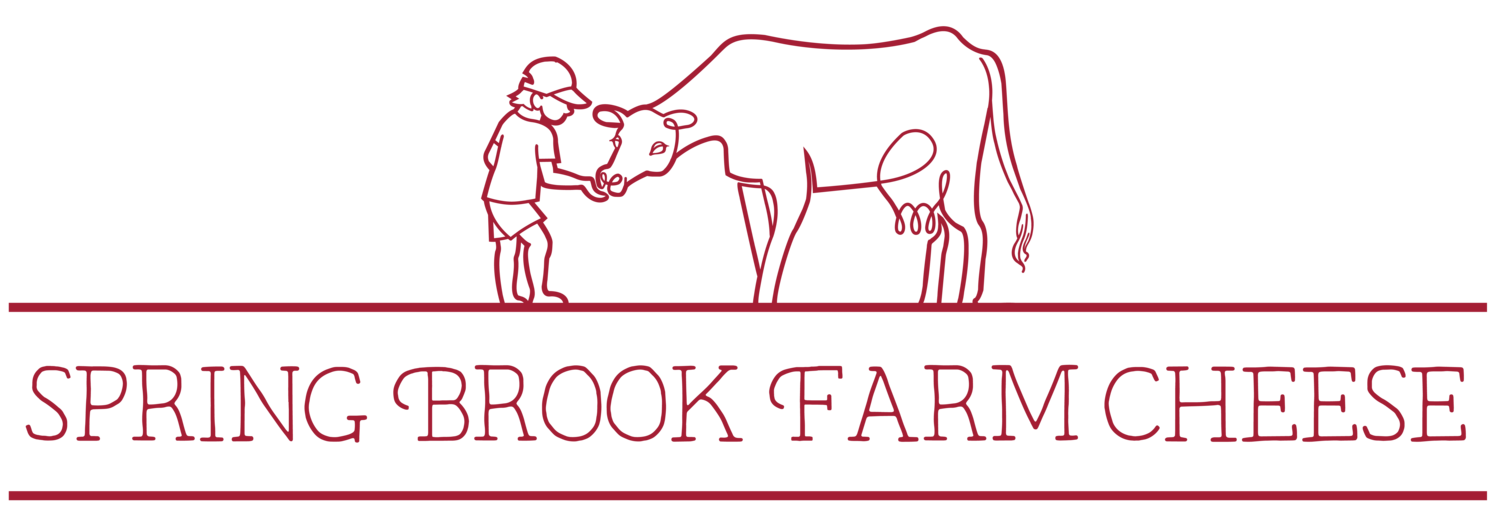Our Cheesemaking Process
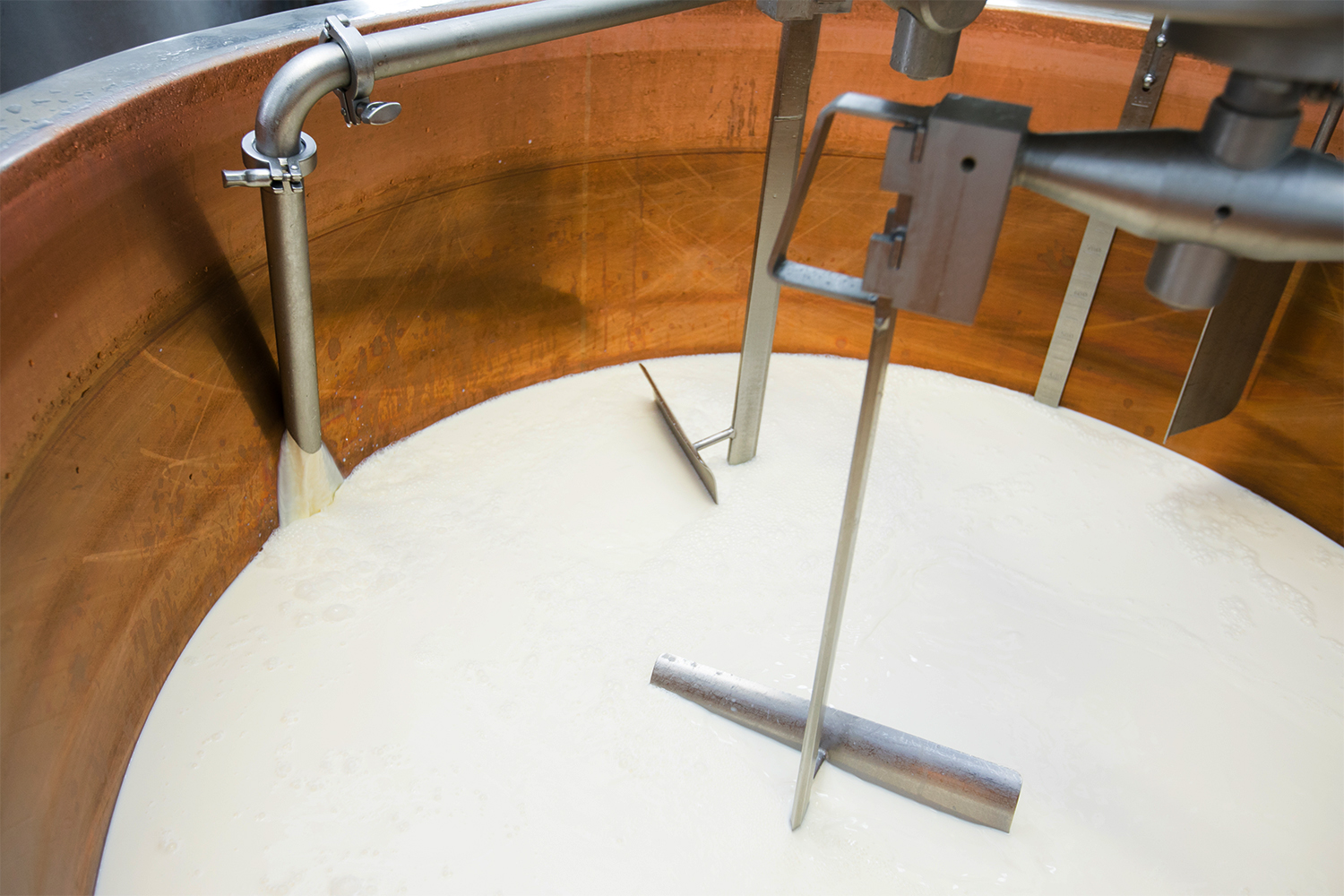
First the cows are milked into the bulk tank at the barn where the milk is cooled and agitated until it is time to make cheese! The milk flows downhill through pipes into our copper cheese vats in the make room. Copper vats are traditionally used in French Alpine cheese making. We are careful to handle the milk gently so that the milk structure remains intact. When the milk is finally in the vat, we start warming up the milk.
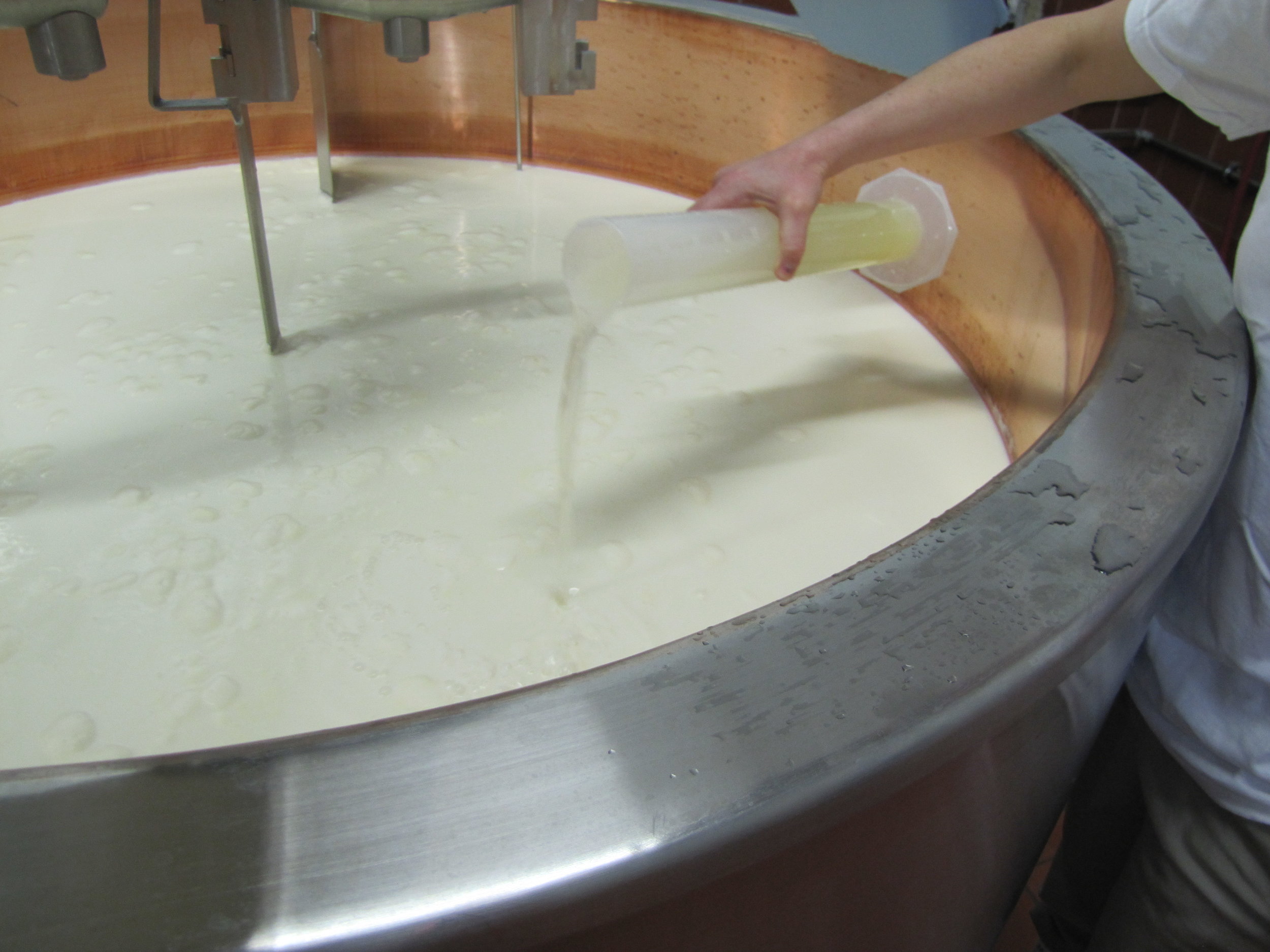
Cheese making cultures are living microbes that are used in cheese making. We work with the naturally occurring microbes in the milk and add proven cheese making cultures when the milk is warm. This combination enhances the finished cheese.
Traditional animal rennet is used to coagulate the milk, that is, to form the curd. The milk volume dictates the amount of rennet that we add. We switch out the stirring paddles for wire-strung harps that are used to cut the curd when it is ready.
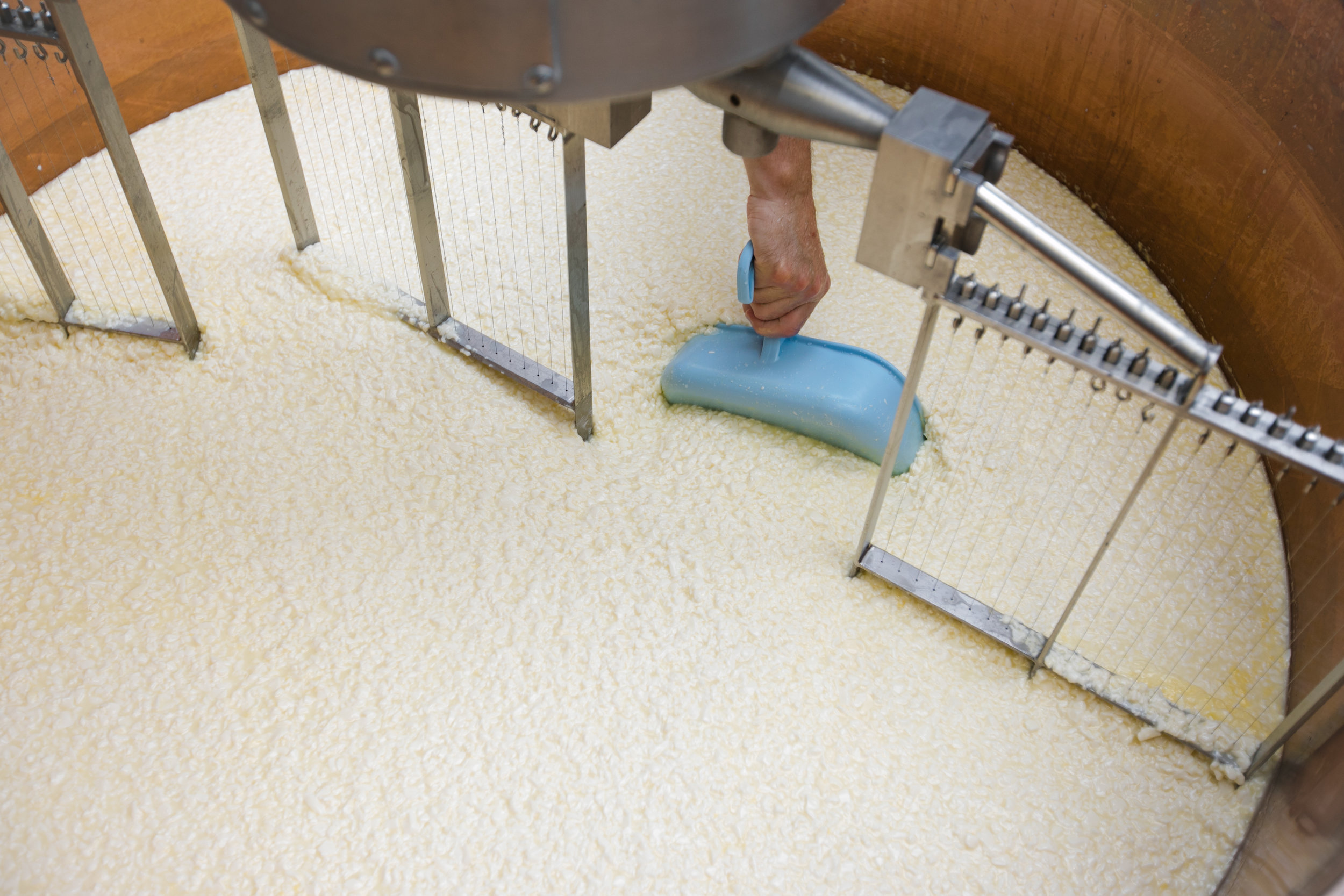
As the milk is coagulating, the curd must be checked to see when it will be ready to cut. The cheese maker tests the curd by watching "the break." The break is when the curd cleaves evenly into separate pieces.
When the curd is ready to cut, the cheese maker starts cutting with the harps. The speed of the harp is slowly increased until the curd is cut into small pieces. The size of the curd is one factor which will determine the moisture content of the cheese it will become.
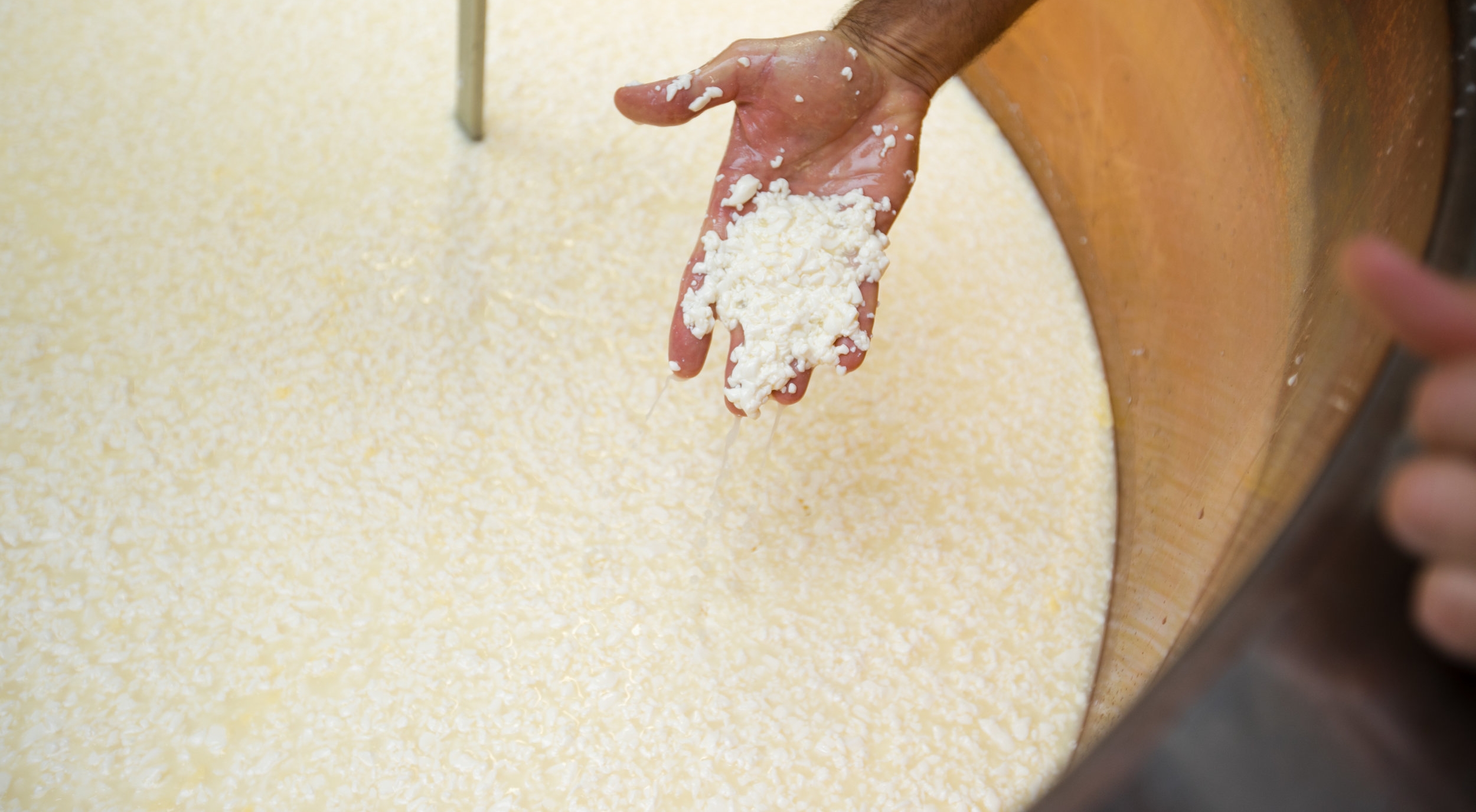
The curd rests for a short time after being cut until it is ready to be heated further. The vat is designed to heat the milk or curd and is controlled by the cheese maker. As the curd is heated carefully or cooked, more whey leaves the curd and it becomes drier. As with the cutting, the judgement of the cheese maker is critical at this point.
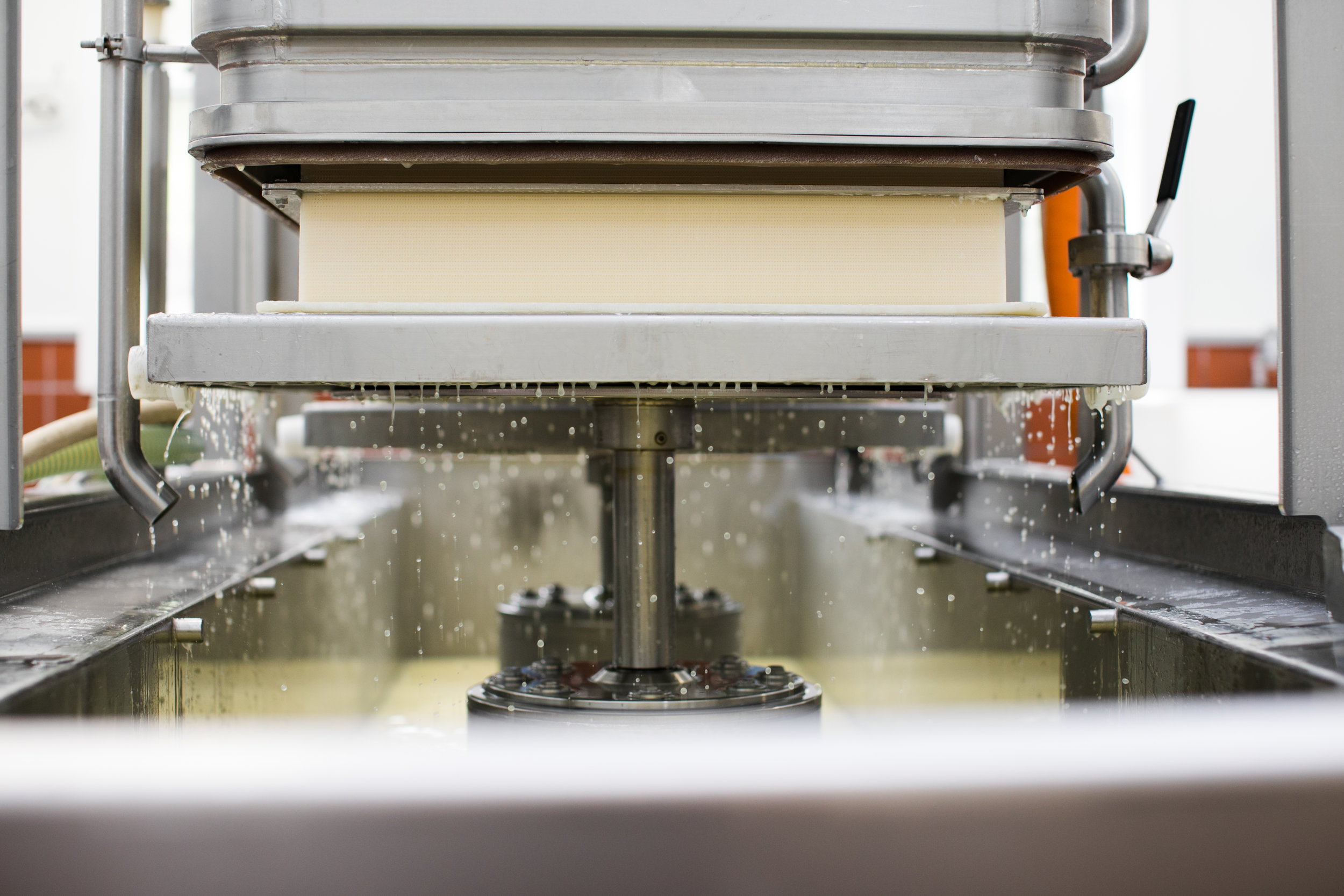
After the curd is adequately cooked, the vat is ready to be drained into our vacuum chambers, which we call the GSV. (The equipment is made in France and we use their acronym for: Groupes de soutirage sous vide). The vacuum in the large chambers pulls the curd through a big hose into the upper chambers of the GSV where the curd settles into large square molds as the whey is drained away. This method is very gentle on the curd since it travels in a cushion of liquid whey.
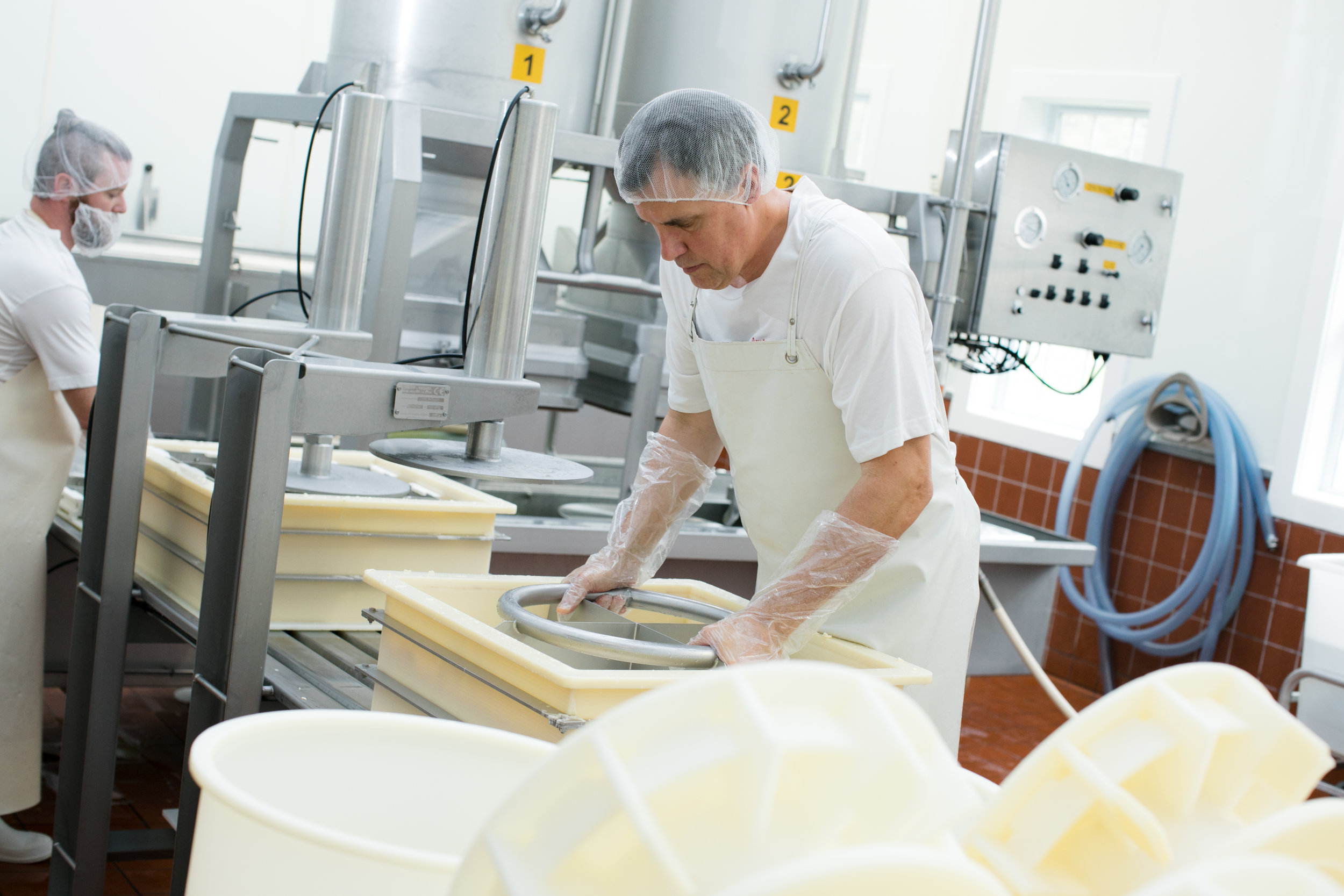
After the curd has been gathered into large square molds it is cut into smaller blocks and then pressed in a round mold and covered with a “hat”. The cheeses in their molds are stacked together on the pile press. Pressing expels extra whey and shapes the curd into a wheel form.
During a later pressing the sides are made concave. Originally, the purpose of having concave sides was to form a place to secure a rope around the cheese so it could be tied onto a donkey’s back. The donkeys carried the cheese down from summer alpine meadows in northern France.
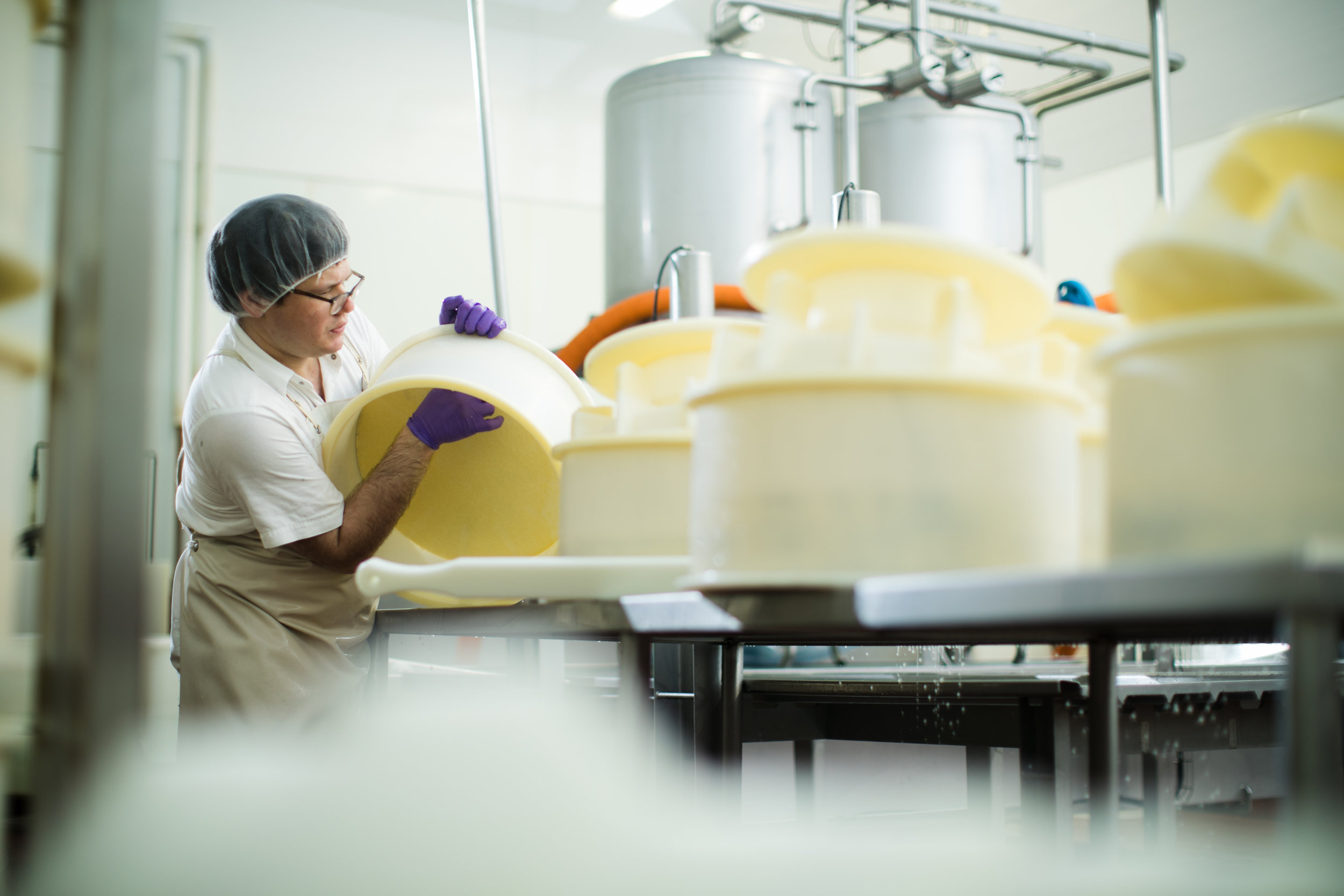
During the press, it is important to turn the cheeses in their molds. The cheeses are un-stacked from the pile press, taken out of their molds, flipped, put back into their molds, and restacked on the pile press to be pressed again.
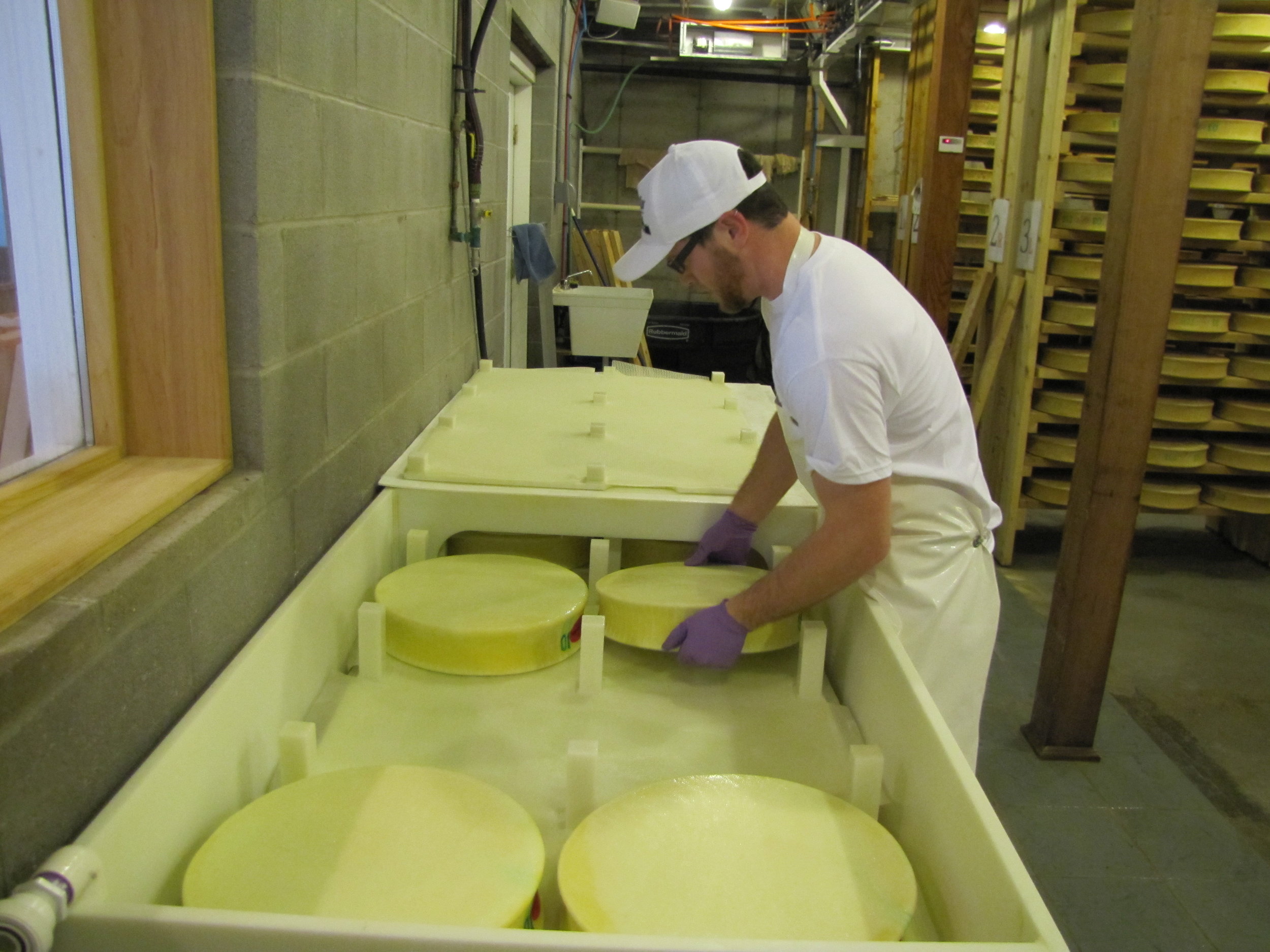
The cheese is checked for correct pH before it is time to go into the brine. When the cheese has reached its target pH, we stamp the make date on the rind with food grade ink and place it in the brine tank. Brine is salt-saturated water.
During brining some whey is removed from the surface of the wheel and replaced with salt. The rind begins to form as the surface hardens, which creates a protective barrier for the cheese.
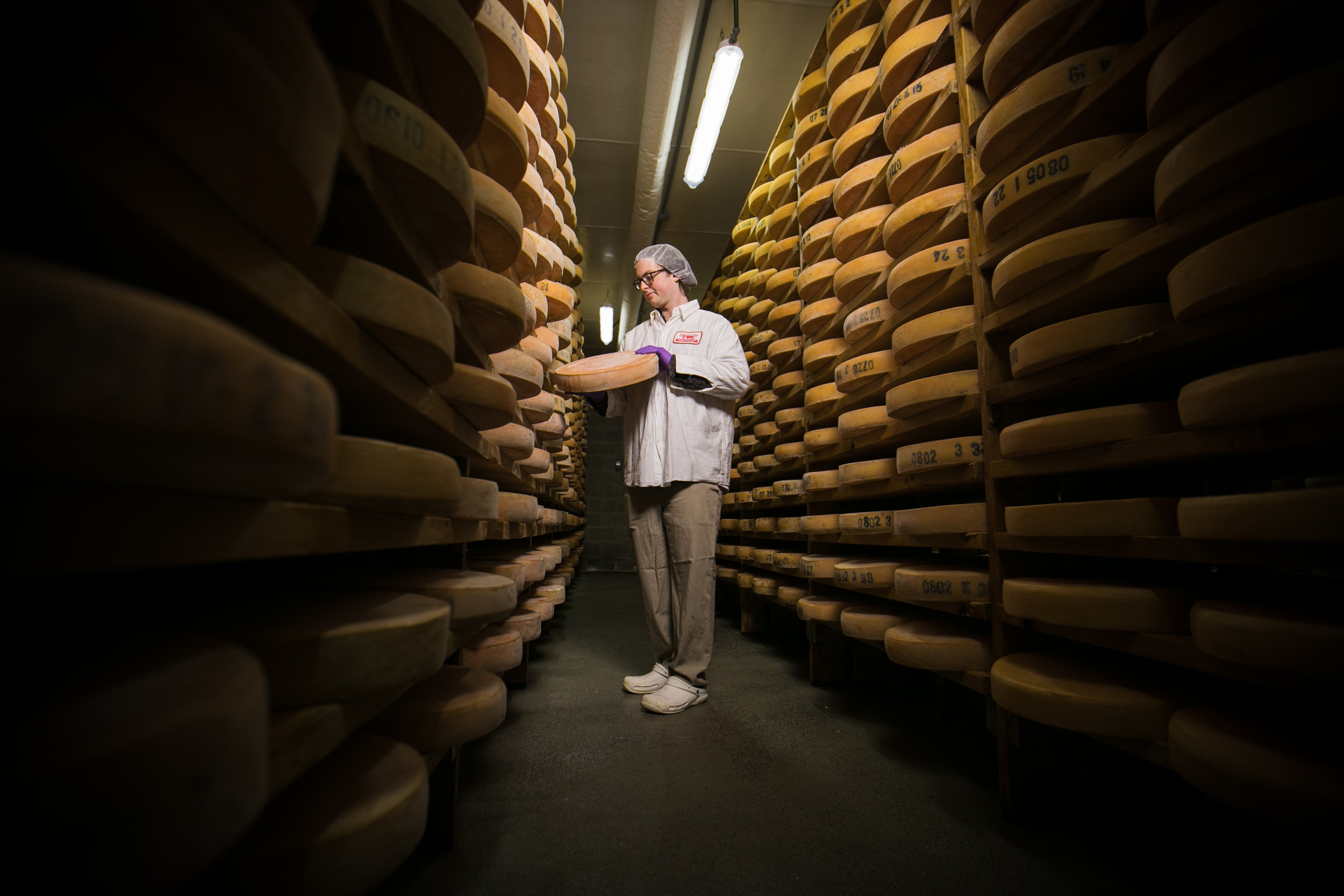
The cheese comes out of the brine after 12 hours. We wash the cheeses with morge before placing them on wooden shelves in our aging room. Morge is a mixture of brine and cultures. It keeps the cheese from drying out, helps to form the rind, and gives the cheese flavor.
Affinage is a very important part of our cheese making process. Affinage is the French word for taking care of cheese in an aging room; a person who ages cheese is an affineur. We age our cheese for up to one year and turn, depending on the cheese being made, and wash our cheese up to sixty times before it is ready for sale. All of the cheeses in our aging room have a strict schedule which determines when they are turned and washed.
